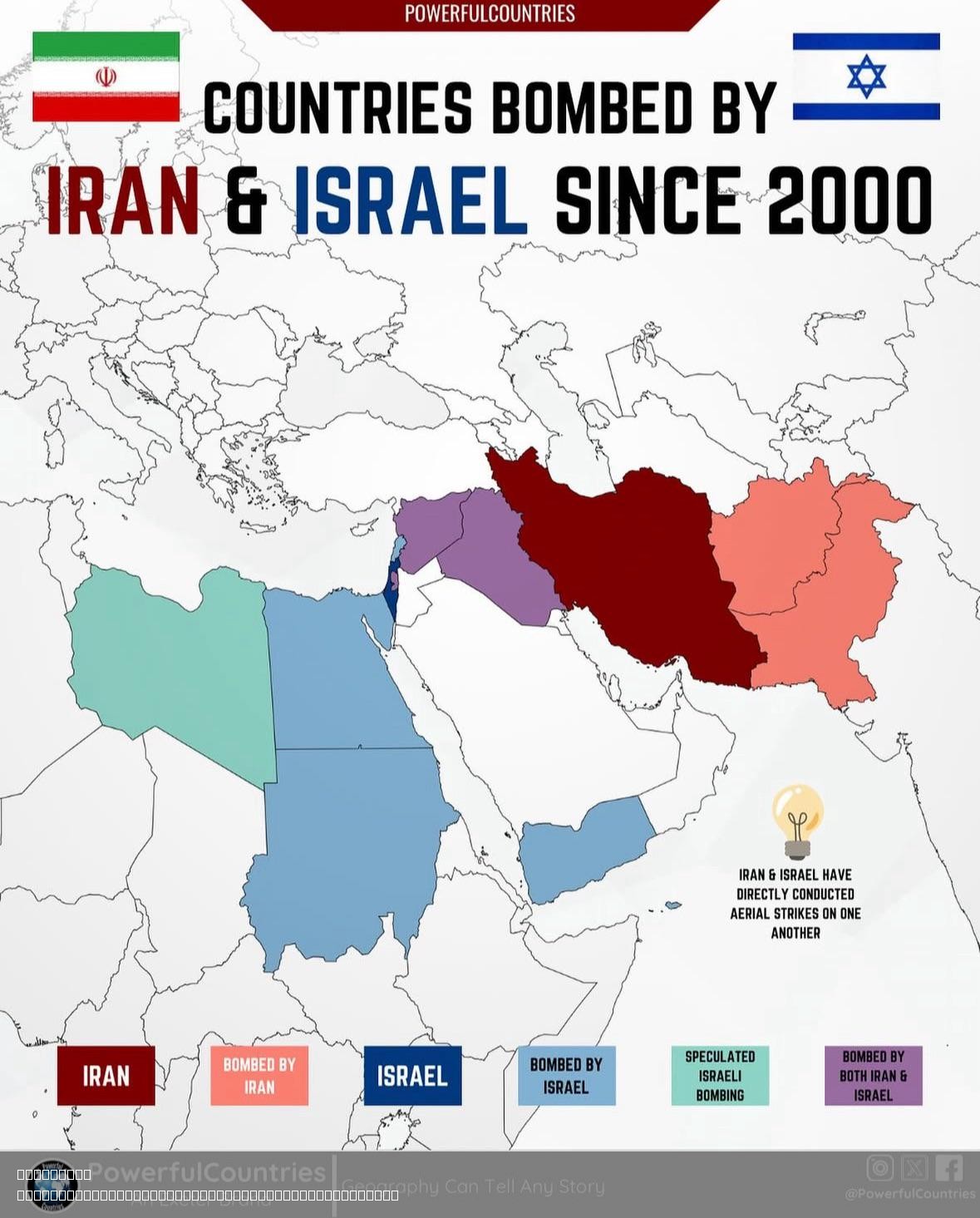Countries Bombed by Israel and Iran Since 2000 Map


Marcus Rodriguez
Historical Geography Expert
Marcus Rodriguez specializes in historical cartography and geographic data analysis. With a background in both history and geography, he brings unique...
Geographic Analysis
What This Map Shows
The map titled "Countries Bombed by Israel and Iran Since 2000" provides a visual representation of the nations that have been affected by military actions conducted by Israel and Iran over the past two decades. This visualization highlights specific locations where military bombings have occurred, delineating the geopolitical dynamics and conflicts that have shaped the Middle Eastern landscape during this time.
The ongoing tensions between Israel and Iran have led to a series of military engagements that not only involve direct conflict but also impact regional stability. Understanding the geographical context of these bombings offers insight into the broader implications of these actions on international relations and local populations.
Deep Dive into Military Actions and Conflict
Military actions are often the result of complex geopolitical factors. Since the turn of the millennium, Israel's military operations have primarily focused on combating perceived threats from various Islamist groups as well as state actors in the region. The most notable conflicts include operations against Hamas in Gaza and Hezbollah in Lebanon. For instance, during the 2006 Lebanon War, Israel conducted extensive bombings throughout Lebanon, targeting both military infrastructure and civilian areas.
On the other hand, Iran has engaged in regional conflicts through its support for various proxy groups, including Hezbollah and militias in Iraq and Syria. This proxy warfare often manifests in bombings and assaults on territories that are strategically important to Iran's national security and its ambition to influence the Shiite Crescent stretching from Iran through Iraq to Lebanon. The Syrian Civil War, which began in 2011, has seen significant Iranian military action, including missile strikes and air support for the Assad regime, further complicating the region's geopolitical landscape.
Interestingly, the map also reveals the broader implications of these bombings. For example, the bombings in Syria not only reflect Iran's military strategy but also Israel's commitment to countering Iranian influence in the region. This ongoing conflict has had devastating consequences for civilians, with countless lives lost and massive displacement of populations, highlighting the human cost of geopolitical strife.
What’s fascinating is how these military actions have shaped public opinion and government policies within the involved countries. The bombings have often been justified on the grounds of national security, yet they also provoke widespread protests and calls for peace among local populations who bear the brunt of these actions.
Regional Analysis
When we look at the map, it’s important to analyze the regional differences in military actions. In Israel’s case, the majority of its bombings have occurred in neighboring countries such as Lebanon and the Gaza Strip, highlighting a concentrated focus on immediate threats. For instance, the 2014 Gaza War saw Israel launch thousands of airstrikes, resulting in a significant number of casualties and international outcry.
Conversely, Iran’s bombings are more dispersed across a wider geographical area, reflecting its strategy of supporting proxy forces in Iraq, Syria, and Lebanon. For example, Iranian involvement in Iraq has included bombings targeting ISIS, while also addressing threats from U.S. forces and their allies. The multiplicity of conflicts where Iran has bombed illustrates its broader regional ambitions and the complexities of its foreign policy.
In contrast, the bombing campaigns of both countries often spark retaliatory actions, creating a cycle of violence that perpetuates instability. The map serves as a stark reminder of how interconnected these conflicts are, with actions in one country often leading to repercussions in another.
Significance and Impact
Understanding the military actions represented in this map is crucial for grasping the current state of international relations in the Middle East. The implications of these bombings are profound, affecting not just the immediate areas involved but also global perspectives on security, terrorism, and human rights. For instance, these military operations have drawn widespread condemnation and discussions around international law, particularly concerning civilian casualties and the legality of such actions.
As we move forward, it is important to consider how these dynamics will evolve. With ongoing tensions and shifting alliances, future military actions may reshape the map further. Current trends indicate an increase in proxy warfare, which could lead to more bombings, not just by Iran and Israel, but involving other regional players as well.
In conclusion, this map of countries bombed by Israel and Iran since 2000 serves as a window into the complex and often tragic interplay of military action, politics, and human lives in the pursuit of national interests and security. By examining these patterns, we gain a better understanding of the realities on the ground, and the urgent need for dialogue and peace in a region fraught with conflict.
Visualization Details
- Published
- August 5, 2025
- Views
- 300
Comments
Loading comments...